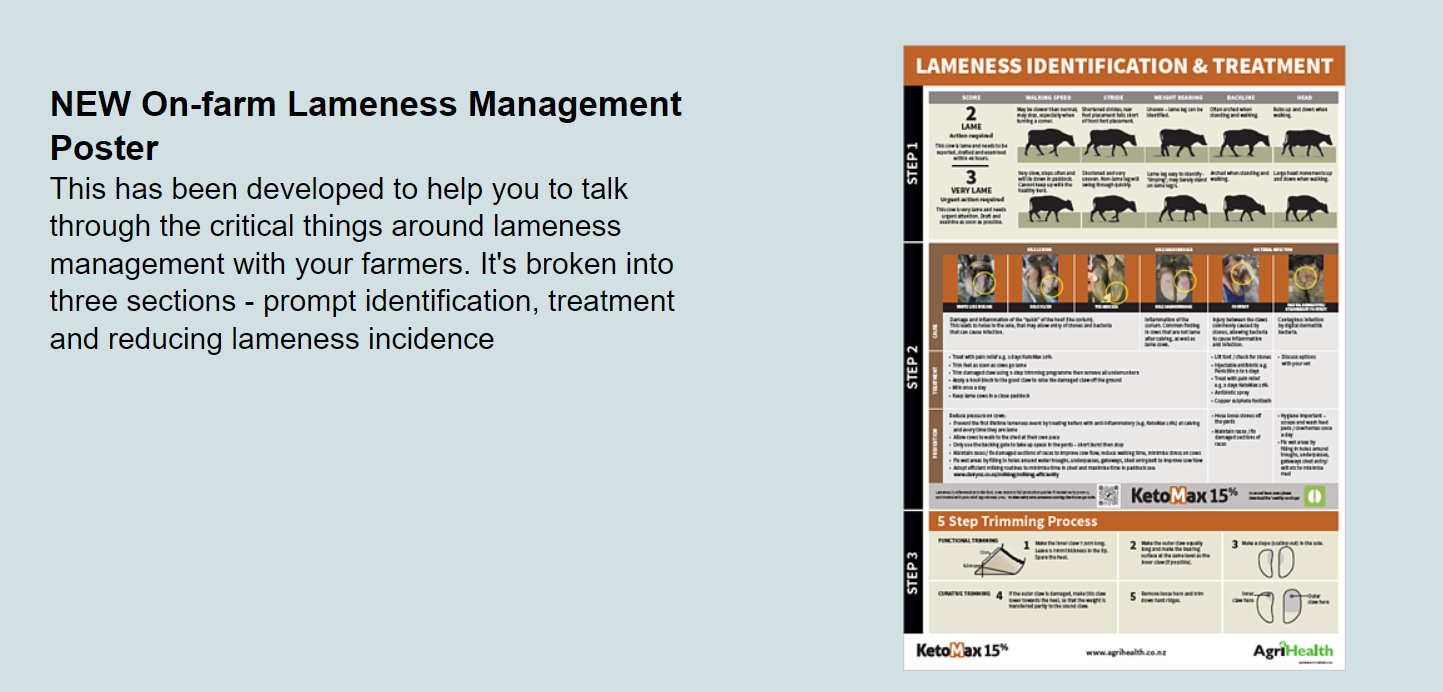08 March 2024
Reducing Lameness in NZ Dairy Herds - Webinar Summary
19 May 2022
Lameness Webinar Summary (4:30 min)
Key messages from the webinar:
Lameness Opportunities in a global context
Mike Shallcrass BVSc Senior Veterinary Manager - Fonterra
- Mounting pressure by customers, governments and NGOs internationally to improve lameness management
- Lame cows are likely to reduce farmers' production efficiency as they are producing less milk while still consuming feed and emitting methane
The Fonterra Farm Insights Report helps vets and farmers identify lameness opportunities to improve their production efficiency. These reports are a great starting point for lameness management discussions as part of animal wellbeing plans.
Managing lameness risks around calving time
Winston Mason BVSc VetEnt Research
Calving relaxes the structure that keeps the pedal bone in place within the hoof capsule - the suspensory apparatus. The pedal bone may then rotate and can damage the sensitive corium especially if weight loss after calving reduces the thickness of the digital cushion, which acts as a force dissipator.
We can help to mitigate these risks by:
- Ensuring a good body condition score at calving and minimal weight loss after calving to maintain the thickness of the digital cushion
- Preventing excessive exposure to hard surfaces at and around calving - especially concrete
Reducing lamenss in NZ Dairy
Steve Cranefield BVSc AgriHealth
- Opportunities for vets to be involved in transition management to prevent lameness
- Best treatment is 3 days of pain relief as soon as cows go lame and potentially at calving (especially for heifers)


Please talk to your AgriHealth representative to access these resources.